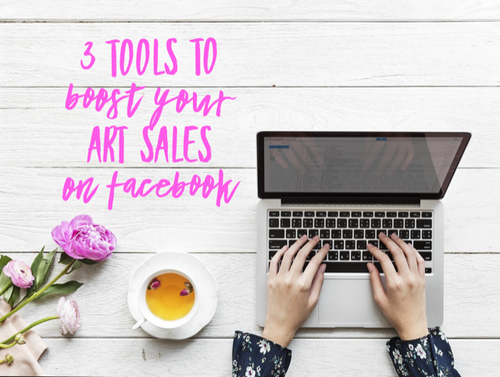by guest blogger Christian Askin
Not seeing results on Facebook? Maybe you’re not taking full advantage! Go beyond simply posting and liking content and adapt a system of integration, automation, and analytics to take your Facebook marketing to the next level.

Facebook can often seem like a waste of time, even when you’re trying to promote your business. While everyone in the market seems to be shouting how essential Facebook is, truth be told, many people never see any real results. Are all those “experts” and “social media marketers” lying? Not necessarily. Facebook can be a powerful tool to boost sales and recognition … if you use it right.
When most people start a Facebook strategy, they’re going backwards. They rely on posts, comments and likes before taking the time to build the systems that make these tactics useful. It’s like setting out for sea with a detailed map, but no ship to ride on. It doesn’t matter how great your content, or how compelling your strategy is. If you’re not setting up the back end elements of Facebook first, you’re wasting an enormous amount of time and effort. Before you embark on your next strategic journey, use these tactics to optimize your Facebook presence.
Integration
Facebook doesn’t exist in a bubble, and neither should your Facebook strategy. There are a whole mess of tools out there to help manage your content production. That means there are certainly some that you can be integrating to make your job easier. Keep in mind, you’re competing with the internet and all of its entertainment and distractions. Don’t fight head on with the other behemoths that have huge content budgets. Instead, invoke some judo magic to use their strengths to your advantage.
This includes using RSS feeds, Google Alerts, Google Trends, and Twitter Trends. These four tools should be essential to all your content curation. Let’s take a look at their utility, one-by-one.
RSS feeds are URLs that automatically update feeds from customer sources. So, if there are industry leaders, artists, or vendors that are essential to what you do, you can add them to a feed to follow their daily updates.
Google Alerts lets you follow important subjects instead of people or companies. You can set alerts containing terms that are directly related to your expertise to stay aware of the latest and newsworthy developments.
Google Trends helps you see how these subjects are evolving over time. If you wanted to see which painting methods are “in” type them into Google Trends, see what people are searching for, and get ideas for similar search terms.
Finally, Twitter Trends can show you what content is resonating with internet users. By searching topics, you can see which posts are most popular, determine what makes them stand out, and imitate their success.
All these resources are essentially for finding interesting, successful content for you to re-share or imitate on your own news feed.
Automation
Automation is about eliminating the mundane aspects of your Facebook strategy so you can focus your time and energy on things only you can do. Any good Facebook strategy is going to need consistent posting, but in the grind of day-to-day life, getting on Facebook to compose a post can seem trivial, or get lost in the fray. Little by little, those missing posts add up, and become a habit of inconsistency. This slow deterioration of quality creates a vicious cycle of unfulfillment. This is often the beginning of the end for most Facebook sprints.
Instead, your Facebook strategy needs to be a marathon. It takes a long time for social media trees to bear their fruits, so to avoid burnout or simple forgetfulness, you can automate the posting process. Facebook has native publishing tools that allow you to schedule future posts, and if Facebook is your only social media platform, this tool might make the most sense for you. However, if you’re like most people, and you are managing a diversity of social media accounts, consider using a service like Hootsuite to manage your future posts.
Hootsuite aggregates all your social media accounts into one place where you can schedule and manage posts. Using this system, you can sit down once a week (or month) to delegate all of your posts. Not only does this give you a more strategic vision, but allows you to work like the pros, guaranteeing you have a period full of powerful content and using your free time to do what really creates value – producing more works of art.
Analytics
Insanity is doing the same thing over and over again, expecting different results. Unfortunately, this is just what many Facebook campaigns do. It’s highly unlikely, in the beginning stages of your Facebook campaign, that you will know exactly what content, in what format, and at what times, will resonate most with your audience. Without any previous research, the first few steps are going to be taken in the dark. However, this shouldn’t deter you from getting started.
Using analytics (or systems that measure the performance of posts, pages, etc.) for every post becomes a micro insight into your audience. By keeping track of what content performs better than others and then finding the commonalities between them, you begin the process of refining your Facebook feed with only the most effective content. In these cases, even bad posts become good data.
The analytics systems, whether native or third party, serve as your content laboratory. Try out different types of posts, themes, and media formats. Whether it’s a “Think-Tank Thursday” or a “Watercolors Wednesday” test new ideas and see how they perform. Is it below average? Toss it and keep experimenting. What’s important is you’re making informed decisions, backed by numeric data, to confirm or deny any intuitions you have about your audience.
Patience
Using these tools, you can transform your Facebook Page from a pet project to a refined marketing machine. And if you are wondering when the “selling” comes, then you need to re-think why you’re on Facebook. With any social media platform, building an audience, providing interesting content, and developing customer loyalty and awareness is the bedrock of future sales. Instead of direct selling, Facebook is a place to cultivate interest and relationships. When the time is right, the sales will come. Rather than fill your feed with bullish sales pitches, use these tools to give them the most engaging and rewarding experiences possible. Then reap the rewards.
 Christian Askin is a digital marketer and consultant for artists. He spends his free time helping artists gain financial independence and find their customers online. Christian is also the founder and main contributor to the online consulting brand Art, Meet Business, where consultants and experts curate actionable advice for artists looking to boost their business skills. Originally from Arizona, Christian has moved to Europe to find new sources of inspiration and motivation in the world of the arts. He can be found at Art, Meet Business or his personal art website.
Christian Askin is a digital marketer and consultant for artists. He spends his free time helping artists gain financial independence and find their customers online. Christian is also the founder and main contributor to the online consulting brand Art, Meet Business, where consultants and experts curate actionable advice for artists looking to boost their business skills. Originally from Arizona, Christian has moved to Europe to find new sources of inspiration and motivation in the world of the arts. He can be found at Art, Meet Business or his personal art website.


So honored to contribute to such an awesome site and resource for artists! To all the readers I truly hope this helps, and don’t hesitate to ask a question in the comments if anything needs clarification! Happy reading!
Excellent, really useful! Thanks a lot!
Great post – thanks a lot for the tools.
BR Michael
https://artbylonfeldt.dk